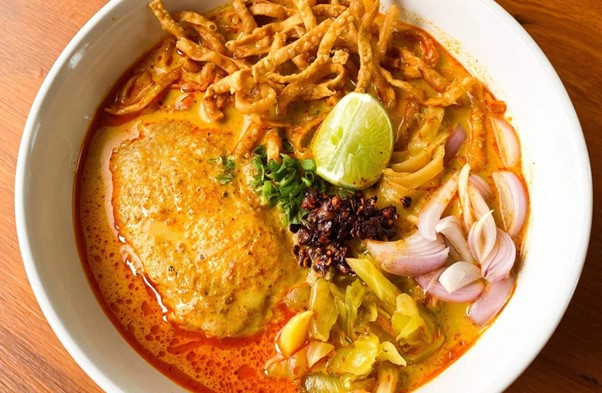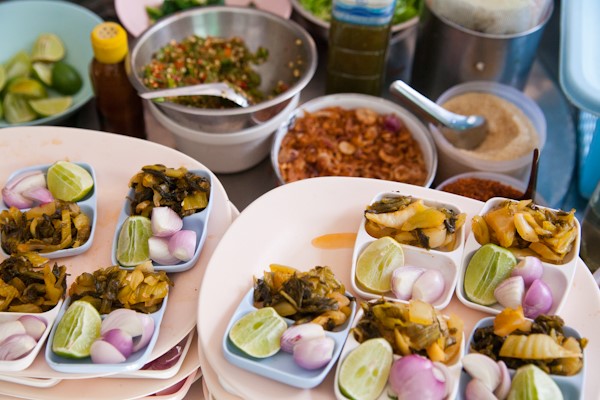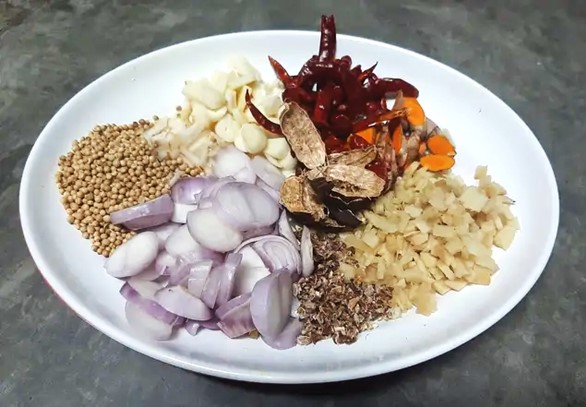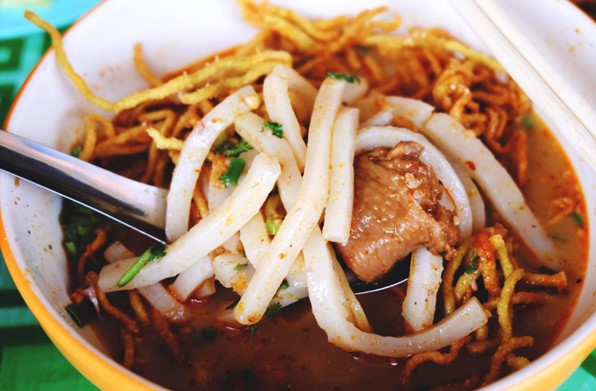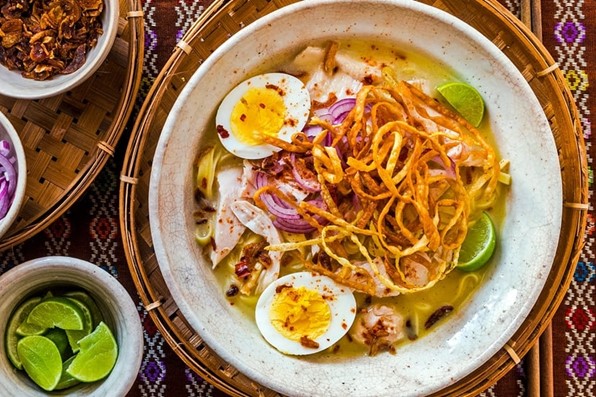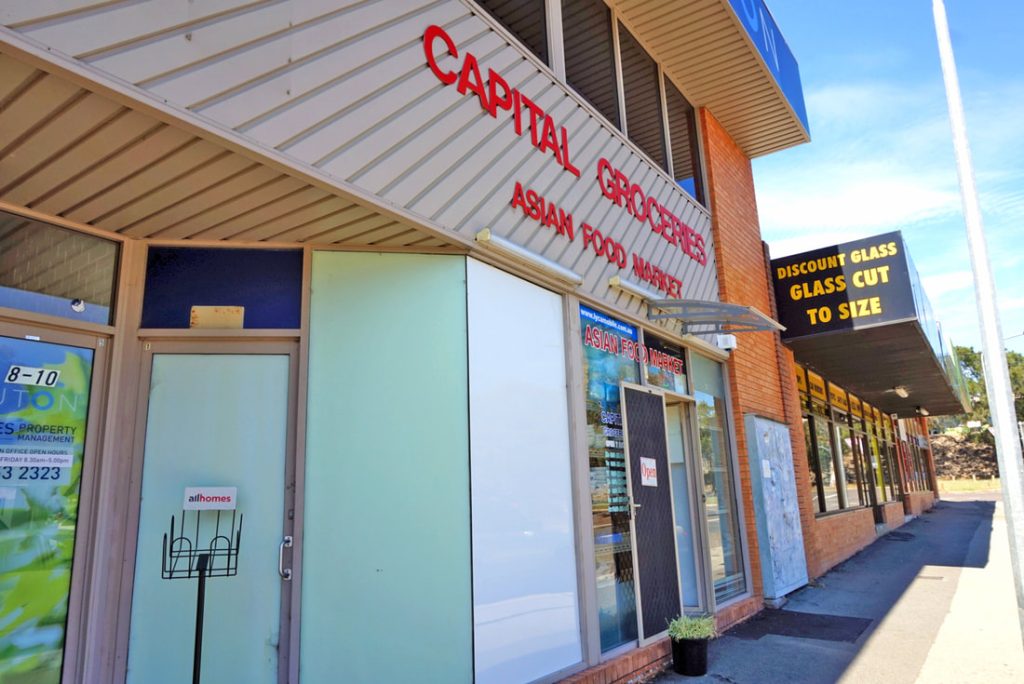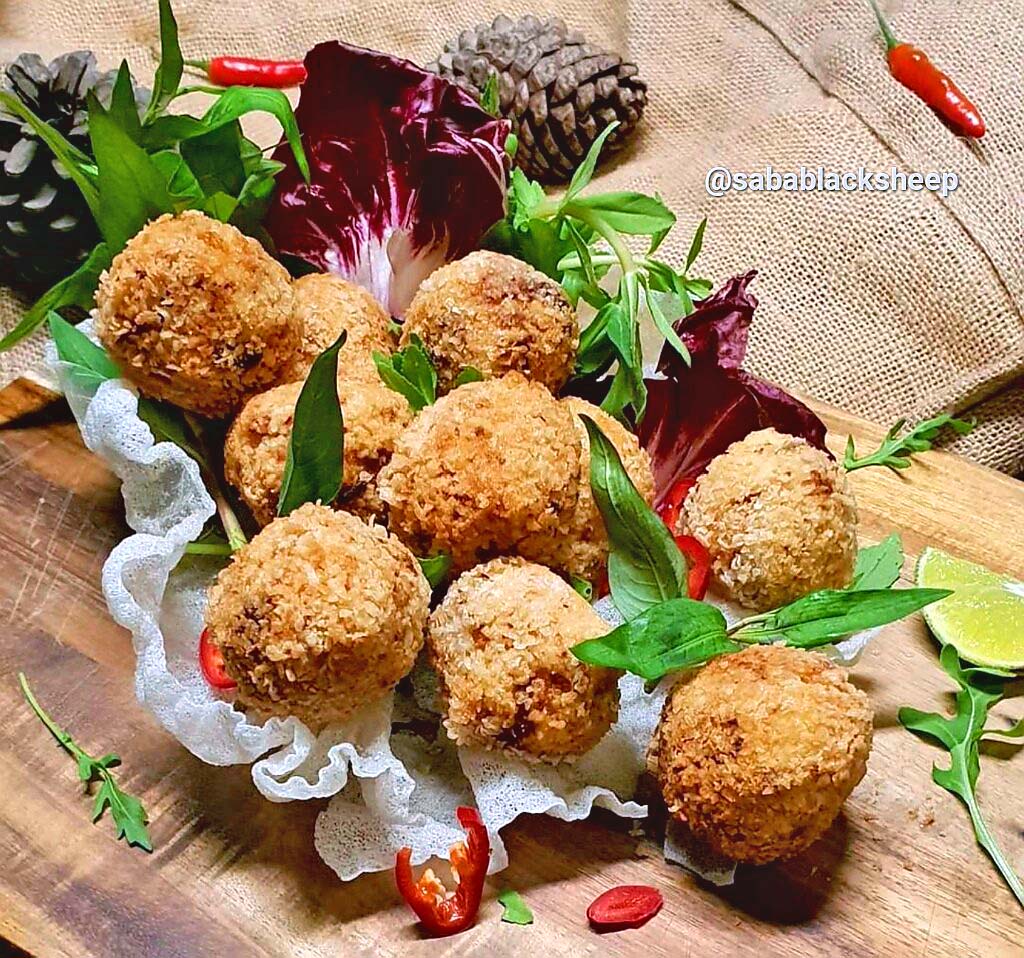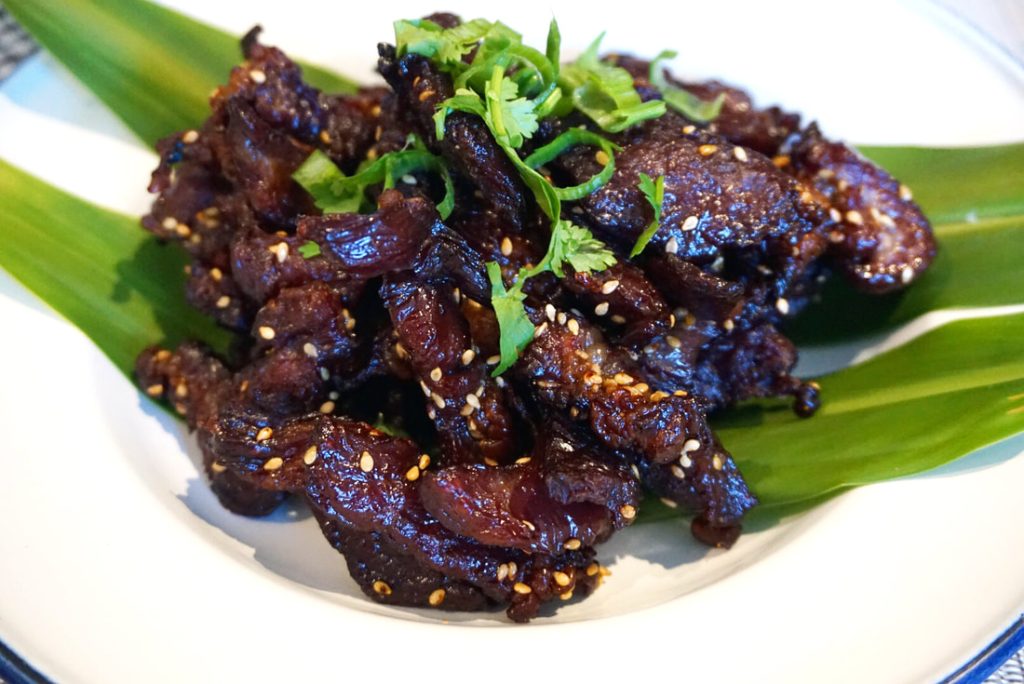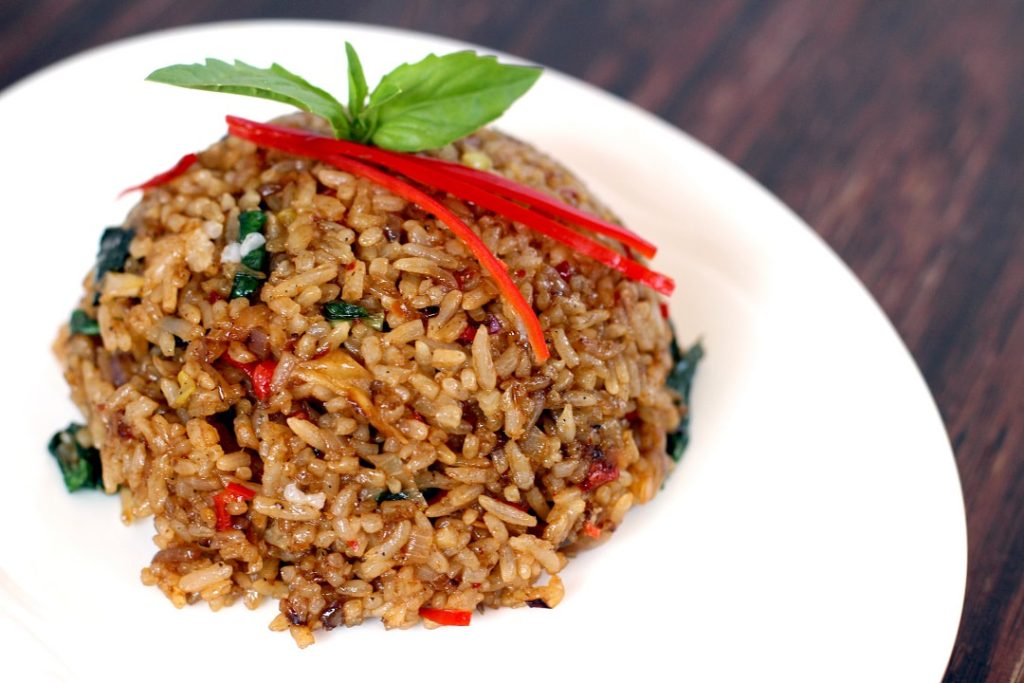Chiang Mai, a province in Northern Thailand surrounded by mountains, waterfalls, jungles and uniquely delicious Northern food. Due to its beautiful nature, rich culture and relaxing atmosphere, it’s a top destination for both locals and foreigners. When looking at travel guides for Chiang Mai, most videos and articles will tell you to seek out khao soi, a noodle dish that has become an icon of the city. Just like trying Vegemite when you visit Australia, trying khao soi is a must when visiting the Northern region!
A bowl of khao soi (Image source | Khao Soi Baan Chan)
Unlike many of the other kuay teow (noodle) dishes found in the Central regions, khao soi has a richer and thicker coconut milk based broth. This broth is usually served with flat egg noodles and a chicken drumstick, topped with crunchy fried noodles and sides of fresh and tart ingredients. These sides help cut through the richness of the broth and include fresh shallots, pickled mustard greens and lime – as with all Thai dishes, more or less chilli and sides can be added to suit individual tastes.
Sides of fresh shallots, lime and pickled mustard greens to freshen things up
(Image source | Meat Loves Salt)
The ingredients for making the curry paste for khao soi mainly consists of black cardamom seeds, coriander seeds, big dried chillies, turmeric, ginger, garlic, shallots, salt and curry powder. However there can be regional variations and some recipes will also include lemon grass, kaffir lime peel and shrimp paste. Like other Thai curries, these ingredients are first roasted until aromatic then pounded using a mortar and pestle until a thick paste forms. This is then added to thick coconut milk over heat and cooked until the oil releases, cooking your protein of choice with this oil will also add a lot of flavour! Coconut milk, water and final touches of salt and seasoning is then added to complete the broth.
Curry paste ingredients (Image source | Deniz Kitchen)
As mentioned earlier, khao soi isn’t quite like the noodle soups you typically find in Thailand, and that may be because its origins lay elsewhere. Back towards the end of the 19th Century, many Chin Haw Chinese who were Yunnanese-Muslim travelled with their caravans and traded throughout the Golden Triangle (where the borders of Thailand, Myanmar and Laos meet). Chiang Mai was a trading hub situated on their main trading route and many settled in the area, bringing their wares, culture and food.
The first khao soi eateries were opened in the area and according to their descendents, the noodles were initially made by forming mountain sticky rice into a dough, rolling them out into sheets and slicing them up into strands of noodles (the Chin Haw call this type of noodles papa). This explains the name khao soi as khao means rice and soi means to chop or slice.
The noodles were not the only difference, originally pieces of tender beef or chicken were stir fried with spices and served with a clearer broth without coconut milk. However as time passed and the dish gained popularity in Thailand, coconut milk, additional spices and sides were added to suit the Thai taste more.
More traditional khao soi with papa noodles can still be found at certain eateries in Chiang Mai
(Images source | Fang Inside)
Although khao soi has become synonymous with Chiang Mai, there is a dish in Myanmar called ohn-no khao swe that shares many of the same elements. Apart from the name and looks, some also believe that they share their origins from the Yunnanese-Muslim that traded in both countries. However others argue that ohn-no khao swe was what inspired khao soi in the first place, as Northern Thai dishes don’t usually contain coconut milk. Unfortunately we may never know how khao soi really came to be, however I for one am very delighted by all the past influences that make khao soi what it is (a delicious noodle soup) today!
A bowl of ohn-no khao swè, a Burmese chicken coconut noodle
(Image source | Grantourismo Travels)


